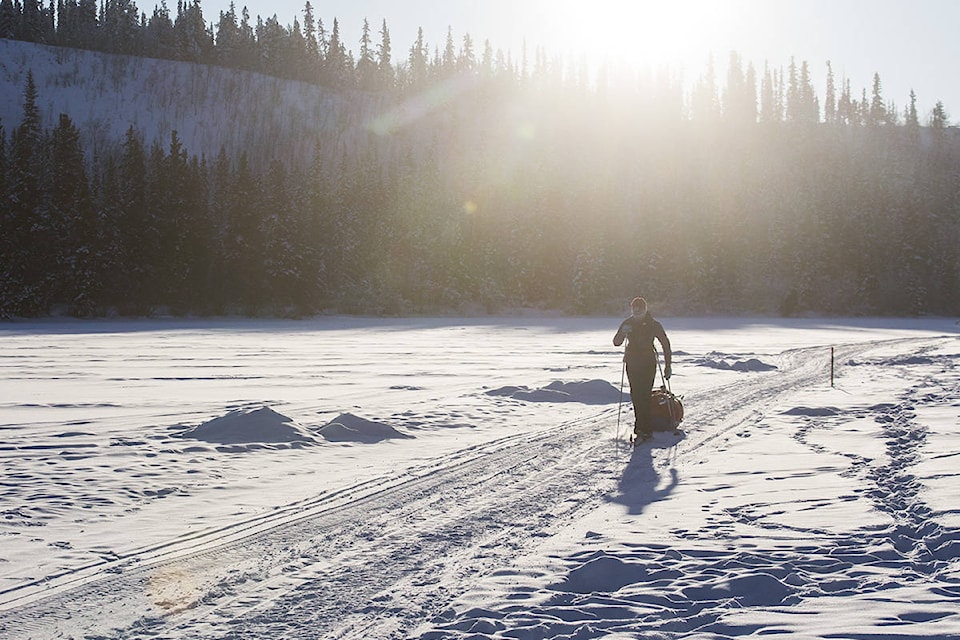The Montane Yukon Arctic Ultra came to a halt in the early morning hours of Feb. 8, when organizers decided to end the race early when the last remaining racer reached Pelly Farm.
Jethro de Decker of South Africa arrived at the checkpoint at 3:45 a.m., and race organizer Robert Pollhammer said he decided to move the finish rather than waiting for de Decker to run back to Pelly Crossing.
The decision makes de Decker the only finisher in the 300-mile race.
Ilona Gyapay made it into Pelly Crossing before the race was called off. She arrived at 10:15 p.m. on Feb. 7, just hours before the race ended.
The only cross-country skier in the race, the Canadian had frostnip on some of her fingertips.
“I finalized the decision when Ilona arrived in Pelly Crossing,” said Pollhammer. “She’s been doing great all these days in those temperatures, and if she is now also getting frostnip, then there is no reason … we should make them be out another night at -40 C.”
Roberto Zanda of Italy scratched from the race due to frostbite between the Carmacks and McCabe Creek checkpoints.
“He got himself into a very dangerous situation,” said Pollhammer. “I do believe that we can say we did everything right. He made a couple of wrong decisions. We found him, we rescued him, we got him to safety, but the damage is done.”
Zanda is currently recovering in hospital.
Another 300-mile racer, Nick Griffiths, also spent some time in hospital for frostbite but has since been released.
Pollhammer said it is rare for the weather during the race to be so cold at the start and to remain that way.
“We’ve never had these cold temperatures from the start for an entire race,” said Pollhammer. “It’s not warming up yet. It sure is still cold today.”
Currently, the policy is to hold the race if race crew cannot start the snowmobiles required to access athletes. That temperature, somewhere between -45 C and -50 C, is also the area when athletes face higher risks of exposure.
“We will think about other things we can do, but we will never be able to hold people’s hand when they’re out there,” said Pollhammer. “We can’t take that away from them.”
The race started in Whitehorse at Shipyards Park on Feb. 1. A total of 48 athletes started the race in three distances — marathon, 100 miles and 300 miles.
Just four of the eight 100-mile racers reached the finish line in Braeburn.
The race has been changed by weather once before, when the 100-mile race was changed to a there-and-back format on a 50-mile course to allow race crews better access to athletes.
Contact John Hopkins-Hill at john.hopkinshill@yukon-news.com
